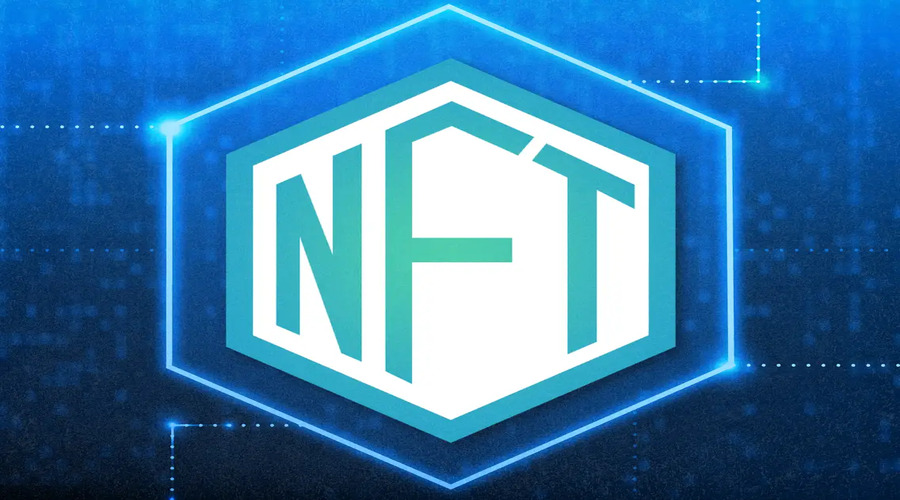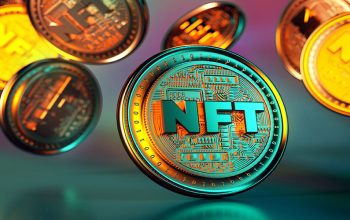Introduction
The world of art has been revolutionized by the introduction of NFTs or non-fungible tokens. NFTs use blockchain technology to create unique, verifiable ownership of digital assets. In this article, we’ll explore how NFTs are changing the concept of chronology and revolutionizing the way we think about ownership and provenance.
NFTs and Time
One of the key features of blockchain technology is time-stamping. Each transaction that occurs on a blockchain is recorded with a time-stamp, creating an immutable record of the transaction. This time-stamping is crucial for creating verifiable ownership of digital assets.
NFTs use time-stamping to create unique, one-of-a-kind digital assets. By time-stamping the creation of an NFT, it can be verified that this particular digital asset is the original, and all subsequent copies are simply replicas. This is a game-changer for the art world, as it allows for the creation of unique digital art that can be owned and verified.
The Benefits of Blockchain for Chronology

1. Enhanced Security
One of the main benefits of using blockchain for genealogy is enhanced security. Blockchain technology provides a secure and tamper-proof way to store data, making it nearly impossible for hackers or cybercriminals to access or manipulate family history information. This is particularly important for sensitive family information such as birth certificates, marriage licenses, and immigration records.
2. Decentralization
Another benefit of using blockchain for genealogy is decentralization. Unlike traditional data storage methods, which rely on a centralized authority to manage and verify data, blockchain is decentralized and distributed across a network of computers. This means that family history information can be accessed and verified by anyone on the network, without the need for a central authority.
3. Transparency
Blockchain technology also provides transparency, making it easy to track and verify changes to family history information. Each transaction on the blockchain is recorded in a transparent and immutable manner, providing a clear audit trail for any changes made to family history information.
4. Collaboration
Blockchain technology can also facilitate collaboration among family members and researchers. By providing a decentralized and secure way to share family history information, blockchain can help to bring together family members from around the world to collaborate on genealogical projects.
5. Preservation
Finally, blockchain technology can help to preserve family history for future generations. By storing family history information on a secure and decentralized platform, blockchain ensures that family history will not be lost or forgotten over time. This can help to ensure that future generations have access to their family’s legacy.
NFTs as Proof of Authenticity
One of the most exciting applications of NFTs is their use as digital certificates of authenticity. In the past, proving the authenticity of a piece of art has been a complex and time-consuming process. With NFTs, this process can be greatly simplified. By attaching an NFT to a piece of art, the ownership and authenticity of the piece can be easily verified, making it much easier to buy, sell, and trade.
NFTs are also changing the way we think about ownership and provenance. In the past, ownership of a piece of art was often a matter of trust. With NFTs, ownership can be easily verified, which means that there is less risk of fraud and deception.
The Future of Chronology and NFTs
The potential applications of NFTs in the art world are just the beginning. As blockchain technology becomes more widespread, there is the potential for NFTs to revolutionize other industries that rely on chronology, such as real estate and financial services.
In the world of real estate, NFTs could be used to create verifiable ownership of properties. By time-stamping the creation of an NFT, it could be verified that a particular property belongs to a particular owner, and that all subsequent transactions are legitimate.
In the world of finance, NFTs could be used to create unique, verifiable digital assets that could be traded on a decentralized marketplace. This would allow for greater transparency and accountability in the financial industry.
For artists and collectors, NFTs represent new opportunities to monetize their work. By creating unique, one-of-a-kind digital assets, artists can sell their work directly to collectors, without the need for intermediaries. This can help to democratize the art world and create new opportunities for emerging artists.
Of course, there are potential challenges and limitations to the use of NFTs in the
future. One concern is that NFTs may not be accessible to everyone, as they require some level of technical knowledge to use. Additionally, there are concerns about the environmental impact of NFTs, as the energy usage required to create and verify them is significant.
Another potential limitation of NFTs is the issue of copyright infringement. While NFTs can be used to prove ownership and authenticity, they do not necessarily protect against copyright infringement. It is still possible for someone to create a copy of a digital asset and sell it as their own, even if the original creator has an NFT that proves ownership.
Despite these potential challenges, the future of NFTs and blockchain technology is bright. As the technology continues to evolve, it is likely that we will see new and innovative applications of NFTs in a wide range of industries. The ability to create unique, verifiable digital assets has the potential to transform the way we think about ownership and value, and could have a profound impact on the future of the global economy.
The Benefits of Blockchain for Chronology
Another benefit of blockchain technology for chronology is its ability to provide a tamper-proof record of transactions. Since each block in the blockchain is linked to the previous block in a chain-like structure, it is virtually impossible to alter a transaction without changing every subsequent block in the chain. This provides an additional layer of security and makes it much more difficult for bad actors to manipulate the data.
In addition to this, blockchain technology provides transparency and accountability. Since the data is stored on a decentralized network, it is accessible to anyone with an internet connection. This makes it much more difficult for bad actors to hide their actions or engage in fraudulent behavior.
NFTs as Proof of Authenticity
NFTs are also changing the way we think about provenance in the art world. In the past, proving the provenance of a piece of art has been a complex and time-consuming process. With NFTs, this process can be greatly simplified. By attaching an NFT to a piece of art, the ownership and authenticity of the piece can be easily verified, making it much easier to buy, sell, and trade.
Another benefit of using NFTs as proof of authenticity is that it can help to combat art fraud. Since NFTs are unique and cannot be duplicated, it is much more difficult for bad actors to create fake pieces of art or engage in other types of art fraud.
The Future of Chronology and NFTs
As blockchain technology continues to evolve, it is likely that we will see new and innovative applications of NFTs in a wide range of industries. One potential application is in the world of ticketing. By using NFTs to create verifiable ownership of tickets, it would be much more difficult for scalpers to engage in price gouging or other types of fraudulent behavior.
Another potential application of NFTs is in the world of gaming. By using NFTs to create unique, verifiable in-game items, game developers can create new revenue streams and give players more control over their virtual assets.
Despite the potential benefits of NFTs, there are also potential challenges and limitations. One challenge is the issue of interoperability. Since NFTs are often created on different blockchains, it can be difficult to transfer them between different platforms.
Another challenge is the issue of environmental sustainability. The energy usage required to create and verify NFTs is significant, which has led to concerns about the impact on the environment. However, there are efforts underway to address this issue, such as the use of renewable energy sources to power blockchain networks.
Additional Benefits of NFTs
In addition to the benefits already discussed, NFTs also offer unique benefits to artists and creators. One of the main benefits is the ability to monetize their work directly. In the past, artists have had to rely on intermediaries such as galleries or auction houses to sell their work. With NFTs, artists can sell their work directly to collectors, bypassing intermediaries and keeping more of the profits.
Another benefit of NFTs is the ability to create new revenue streams. By creating unique, one-of-a-kind digital assets, artists and creators can sell their work multiple times, creating a steady stream of income. This is particularly useful for emerging artists who may not have a large following yet but still want to monetize their work.
NFTs also provide a new way for artists and creators to engage with their fans and collectors. By creating unique digital assets, they can offer exclusive content or experiences to their fans, creating a deeper connection and loyalty.
Potential Applications in Other Industries
While NFTs have primarily been associated with the art world, there are potential applications in other industries as well. For example, NFTs could be used to create unique, verifiable identities for individuals. This could be particularly useful for industries that require identity verification, such as healthcare or finance.
NFTs could also be used in the world of sports to create unique, verifiable digital assets such as tickets or merchandise. This would allow for greater transparency and accountability in the sports industry and could help to combat issues such as ticket fraud or counterfeit merchandise.
Another potential application of NFTs is in the world of education. By creating unique, verifiable digital certificates, NFTs could help to combat issues such as diploma mills or fake credentials. This would provide greater transparency and accountability in the education industry and could help to ensure that individuals have the skills and knowledge they claim to have.
The Importance of Regulation
As with any new technology, there is a need for regulation to ensure that it is used responsibly and ethically. In the world of NFTs, regulation is particularly important to ensure that bad actors do not use the technology for illegal or unethical purposes.
One area that may require regulation is the issue of copyright infringement. While NFTs can help to prove ownership and authenticity, they do not necessarily protect against copyright infringement. It will be important for regulators to ensure that creators are protected from copyright infringement and that they receive fair compensation for their work.
Another area that may require regulation is the issue of environmental sustainability. While efforts are underway to address the energy usage required to create and verify NFTs, it may be necessary for regulators to set standards or guidelines to ensure that the technology is used in an environmentally responsible way.
Conclusion
NFTs are revolutionizing the art world by creating unique, verifiable ownership of digital assets. By using blockchain technology to time-stamp transactions, NFTs are changing the way we think about ownership and provenance. As the use of blockchain technology becomes more widespread, the potential applications of NFTs are limitless.
From creating verifiable ownership of real estate to revolutionizing the financial industry, NFTs have the potential to transform the way we think about ownership and value. Despite the challenges and limitations that NFTs may face in the future, the possibilities for this groundbreaking technology are endless.
Pranav is a tech, crypto & blockchain writer based in London. He has been following the development of blockchain technology for several years.




